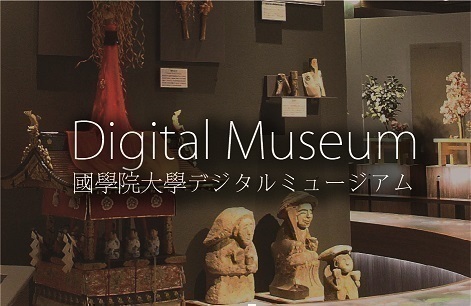- トップ
- Encyclopedia of Shinto
- Izumo Shinkō
Encyclopedia of Shinto
| Main Menu: | |
| Links: |
詳細表示 (Complete Article)
| カテゴリー1: | 6. Belief and Practice |
|---|---|
| カテゴリー2: | Shrines and Cultic Practices |
| Title | Izumo Shinkō |
| Text | Izumo Shinkō is the faith centered around the shrine Izumo Taisha in Taishamachi, Shimane Prefecture. The "enshrined kami" (saijin) Ōkuninushi has many variant names or titles modifying those names, and from these we know that he was worshipped as, among other things, an earth kami, as the king or possessor of the land of Japan, and as a kami of land reclamation and agriculture. From the distribution of legends concerning the kami associated with Ōkuninushi in the Izumo no kuni fudoki (733) we can see that the cult of Izumo encompassed the entire Izumo region. Until the Bakumatsu Period, Izumo Taisha was generally referred to as Kidzuki Taisha, and the shrine's foundation legend (which describes Ōkuninushi's "relinquishing the land" (kuniyuzuri), accompanied with the construction of a tremendous shrine) seems to reflect the historical unification of the Japanese nation. There are, however, many theories concerning the era of the shrine's founding, and no definitive interpretation has been settled upon. The officiant of Izumo Taisha, the "governor of Izumo" (Izumo kokusō – also read as kuni no miyatsuko), worshipped both his traditional "clan kami" (ujigami) at Kumano Jinja (the present-day Kumano Taisha) and also at Izumo. From the Nara Period into the first half of the Heian Period, every time a new kokusō took office, he would travel to the capital and recite the norito "Izumo no kuni no miyatsuko no kanyogoto." At first the central government regarded Kumano more highly than Izumo, but from the second half of the Heian Period, Izumo Taisha became an ichinomiya, and its land holdings were increased, numbering twelve towns and seven seaside villages in the Kamakura Period. At the end of the medieval period, the amount of rice garnered from these holdings amounted to about 5,400 koku, but in 1591 the shrine was stripped of all but five towns and two seaside villages, in order to fund Mōri Terumoto's dispatching of troops to the Korean Peninsula. Except for an increase of "fields that provide rice offerings" (saiden) and of lands to provide for shrine repairs, Izumo didn't recover the lost tribute land until the Bakumatsu Period. , Activities of oshi (shrine priests who guided and hosted pilgrims) related to Izumo Taisha date back to approximately 1532 ~ 1555 but it is thought that the economic problems cited above explain the sudden increase in their activity. In many regions there is a legend that the kami gather at Izumo during the tenth month of the lunar calendar. At Izumo this month is referred to as kamiaritsuki (the month when the kami are present). In accordance with this legend, the tenth month was referred to as kannadsuki (the month when the kami are absent) throughout the rest of Japan. An early example of this term can be found in the Ōgishō, written in the first half of the twelfth century, and the term kamiaritsuki appears in the Kagakushū, written in the Muromachi Period (1444). These terms spread widely in the first half of the sixteenth century due to such texts as the yōkyoku (Noh script) Ōyashiro. These legends probably derive from local customs of greeting and seeing off the "kami of the rice paddy" (ta no kami) and from igomori festivals (abstinence and confinement to purify the self before religious events). Rites for the gathering of kami are also conducted at the shrines Sada Jinja and Kamosu Jinja in the Matsue area, but Izumo Taisha's Kamiari Festival became particularly famous. The cult of enmusubi (connecting romantic couples or enabling marriage) through the kami of Izumo seems to be an early modern development created by the activities of oshi. Somewhat older, however, is a cult relating to the "deities of prosperity" (fukutokujin) which held that Ōkuninushi was the deity Daikokuten. In Indian religion, Daikokuten was the deity of battle, Mahākālā; in T'ang Dynasty China he was adopted as a Buddhist deity of food; and in Japan he became a guardian deity of Buddhist temple kitchens. The conflation with Ōkuninushi derives from the homophonous characters "大黒" (read "daikoku") and "大国" (read "daikoku" or "ōkuni"), and from the similarity of the two deities' characters as guardian kamis of food. Evidence of the conflation of these deities was recorded in the Chiribukuro written in the mid Kamakura period. In Japan's Shikoku and Chūgoku regions, there are many "Izumo yashiki" buildings. These structures have been purified with small amounts of sand taken from below the floor of the Soga no Yashiro, which stands behind the "main shrine" (honden) of Izumo Taisha. People thereby make a spiritual offering of their land or homes to the ruler of the land, Ōkuninushi, in order to receive his protection. At the beginning of the Meiji Period, Izumo Taisha emphasized the legend of "relinquishing the land" (kuni yuzuri) – namely, a peaceful transfer of land. The shrine also actively incorporated the notion that Ōkuninushi was a kami who ruled the other world (originally posited by Hirata Atsutane), in order to preach about a peaceful afterlife and to appeal for the introduction of Shinto-style funerals (shinsōsai). At this time, two religious groups were established, based around associations for worshipping the kami ("keishinkōsha") and on places of assembly. The two religious groups are the Izumo Ōyashirokyō, connected with the Senge clan of governors (kokusō), and the Izumokyō, connected with the Kitajima clan of kokusō. The combined number of believers in these groups is claimed (by the sects themselves) to exceed 1,500,000. See also Izumo Taisha, Izumo Taishakyō, and Izumokyō. — Hirai Naofusa |




